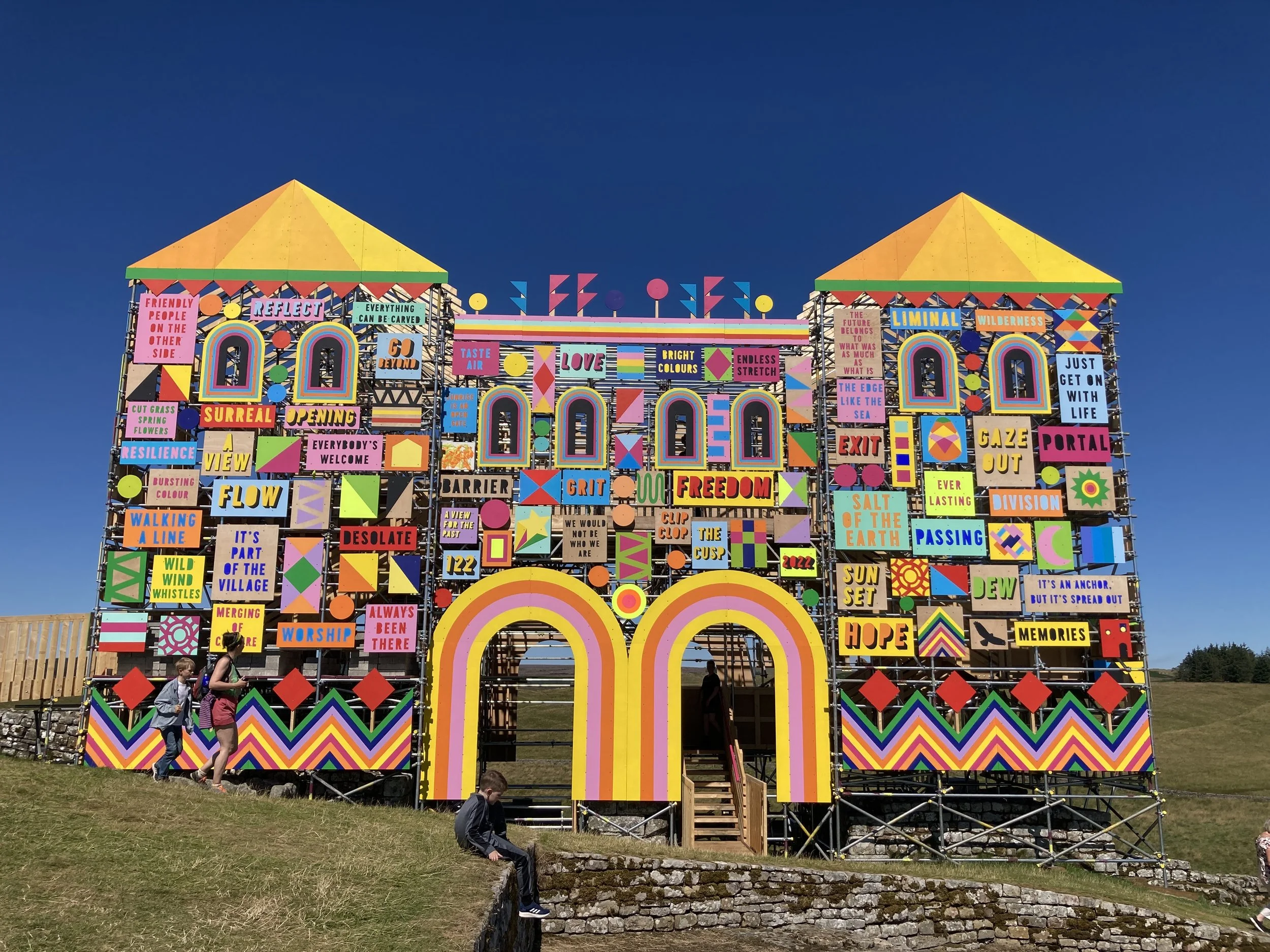Radical Acts: Why Craft Matters
The exhibition Radical Acts: Why Craft Matters at Harewood House, near Leeds, explores how craft can make a bridge between old knowledge and some of the current challenges facing society. The curator of the exhibition, Hugo Macdonald, talks about craft as ‘time-honoured knowledge and a force for positive impact’ (2022)
This reminded me of the writing of Alexander Langlands, who wrote
The Oxford English Dictionary can find no word to exchange, like for like, for Old English cræft and instead offers an amalgam of “knowledge, power, and skill’, and an extended definition where a sense of wisdom and resourcefulness surpass the notion of ‘physical skill’. (2017).
In the exhibition at Harewood House, 16 people and projects were invited to use their crafts to address an issue in modern life. The issues covered included social justice and equality, climate change and conservation, and natural resources and waste. Most of the exhibits were placed in rooms that you would encounter on a tour of the house even if you hadn’t come specifically for the exhibition, thus potentially engaging a wider public than might have come to see an exhibition in a traditional gallery space.
Here I reflect on the three projects which featured textiles.
THE RADICAL ACT OF REPAIR
A much loved 30 year old fleece belonging to the Grounds and Gardens Supervisor, repaired by Celia Pym.
The first room on a tour of the house is the library, here were mended items laid out on a long table. They had been supplied by sixteen members of staff and repaired by Celia Pym. Celia Pym is a textile artist who explores damage and repair in textiles. Each item that was repaired came with a story, explaining why the owner would like to extend the life of the garment and why it was important to them. Some of these stories were similar to the stitched stories told for the Fragment of a Dress project I participated in.
Celia Pym, speaking about the process of mending, says:
The process of mending something for others is an opportunity to ask what matters to them and to explore why. It builds empathy’ (Harewood House, 2022)
Do listen to the conversation between Hugo Macdonald and Celia Pym in the exhibition podcast https://harewood.org/whats-on/radical-acts/podcast-celia-pym/
THE RADICAL ACT OF LOCAL INDUSTRY
One in a series of banners by Jamie Holman and students at Blackburn College.
I have mentioned Community Clothing before. They are a manufacturing company that aims to ’make quality affordable clothing and at the same time sustain and create jobs in the UK’s textile making regions’ (Harewood House, 2022).
Patrick Grant, founder of the company, proposes a model for a clothing industry that would have been familiar in earlier times – using local skills and resources and making clothes that last. By ignoring the unsustainable cycles of the fashion seasons, we can buy clothes that will last much longer, and need replacing less often. Community Clothing garments are more expensive than those you might buy in some high street stores, but you can be sure they have been made in England, by fairly paid labour, and will outlast the ‘stack them high, sell them cheap’ clothes.
In the exhibition Grant speaks, on film, about the company; this is accompanied by a series of banners that address many of the issues raised across the whole exhibition, these have been created by Jamie Holman and students at Blackburn College.
The video can be viewed on the Harewood House website: https://harewood.org/whats-on/radical-acts/community-clothing-initiative/
THE RADICAL ACT OF HUMANITY
Tapestry hand-loomed in India using a combination of cotton, jute, seagrass, hemp, wool, and wood, all locally sourced.
Ilse Crawford and Nani Marquina
Ilse Crawford, a London designer, and Nani Marquina, a rug maker and interior designer from Barcelona, joined together to produce a range of beautiful handmade textiles, that took into account the needs of both the end user and the makers.
When the makers were asked what was important to them, they asked to use local materials and without the use of bleach and dyes.
It should not be considered radical to considered radical to always designing for a positive impact on health and the environment - this needs to be the way forward.
These constraints did not prevent the production of beautifully designed textiles. Indeed, Ilse Crawford commented in the video alongside the exhibition that she is ‘a big advocate of restrictions in the design brief because that is where the creativity starts to flow’. (Wellbeing, 2020 at 3:10)
Reflections
I try to live and work in as sustainable way as I can and these examples of radical acts provide reminders of what I might try to do better. Three things I would like to take from this exhibition into my work:
consider carefully before I buy new materials for my making and try to manage with what I have or look to repurpose used textiles
try find out about provenance of anything I do buy and the people who made them
think carefully about any chemicals, dyes, and inks I use and how I dispose of them
References
Harewood House (2022) Radical Acts: Why craft matters (Exhibition Catalogue) Leeds: Harewood House Trust.
Langlands, A. (2017) Cræft How traditional crafts are more than just about making. London: Faber & Faber.
Macdonald, H. (2022) Radical Acts: Why Craft Matter, Harewood. Available at: https://harewood.org/whats-on/radical-acts/from-the-curator-hugo-macdonald/ (Accessed: 4 August 2022).
Wellbeing (2020). (Woven Talks). This conversation between Nani Marquina and Ilse Crawford begins with a short video about Crawford’s thinking, which was also shown in the exhibition. Available at: https://nanimarquina.com/article/1-wellbeing-with-ilse-crawford (Accessed: 4 August 2022).














